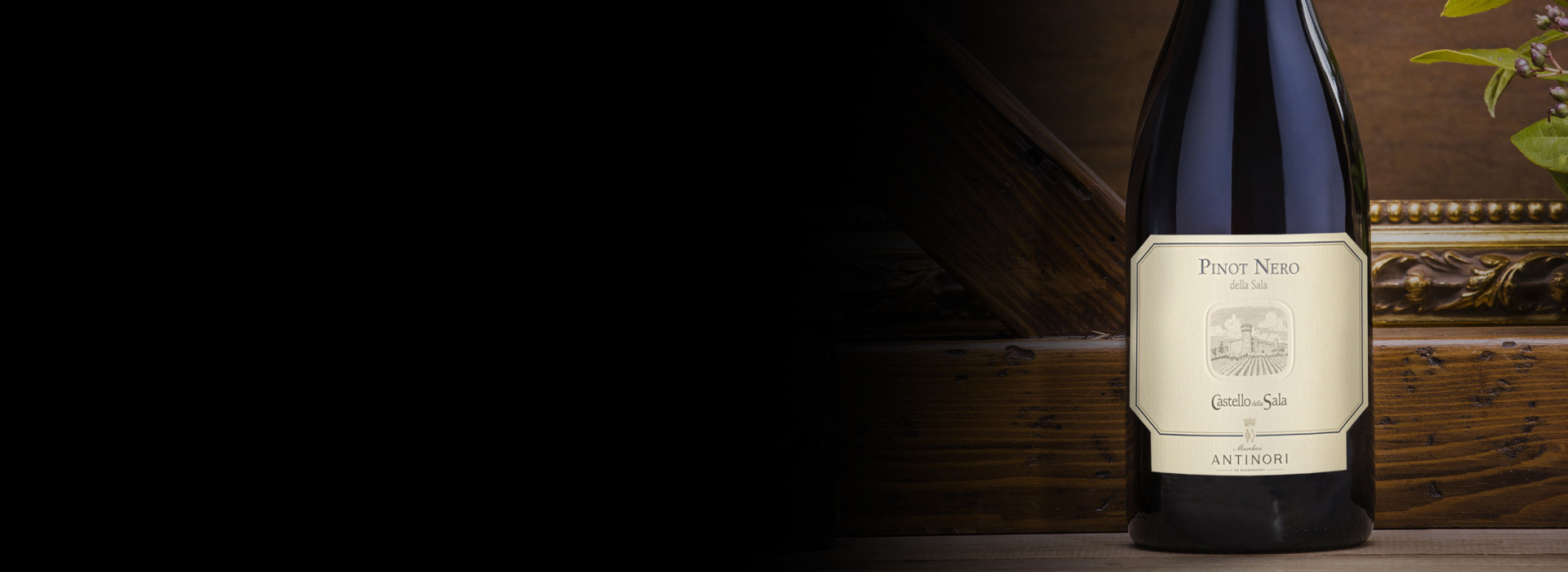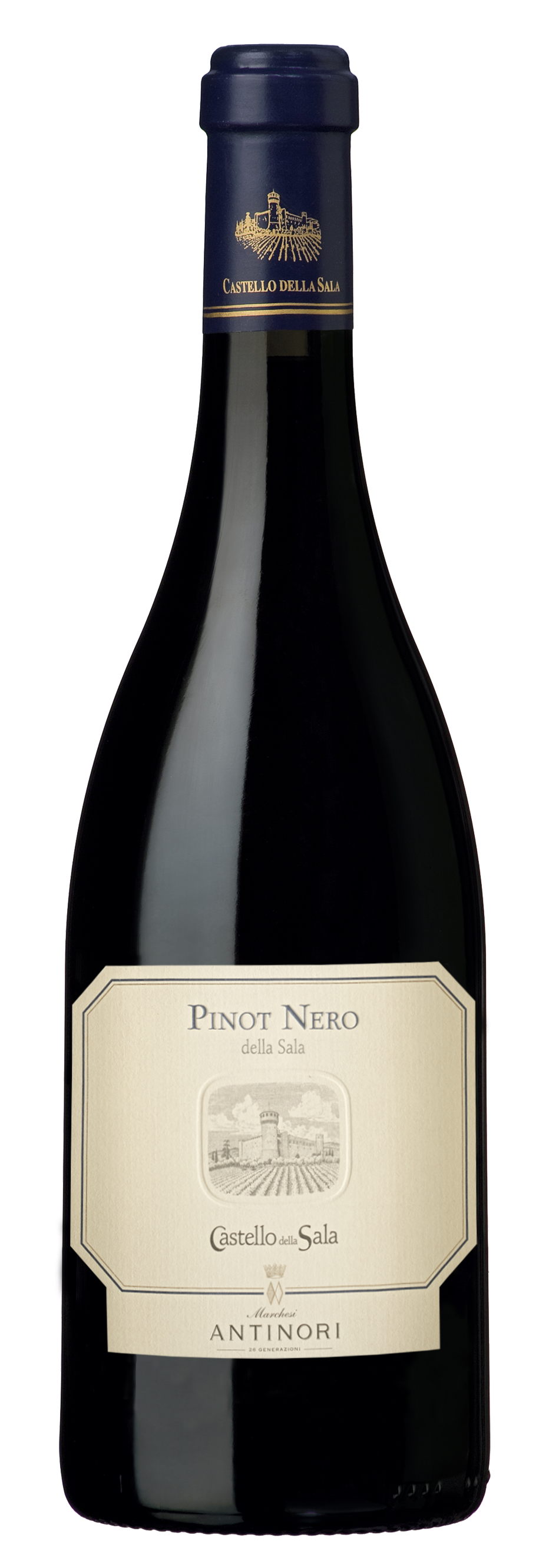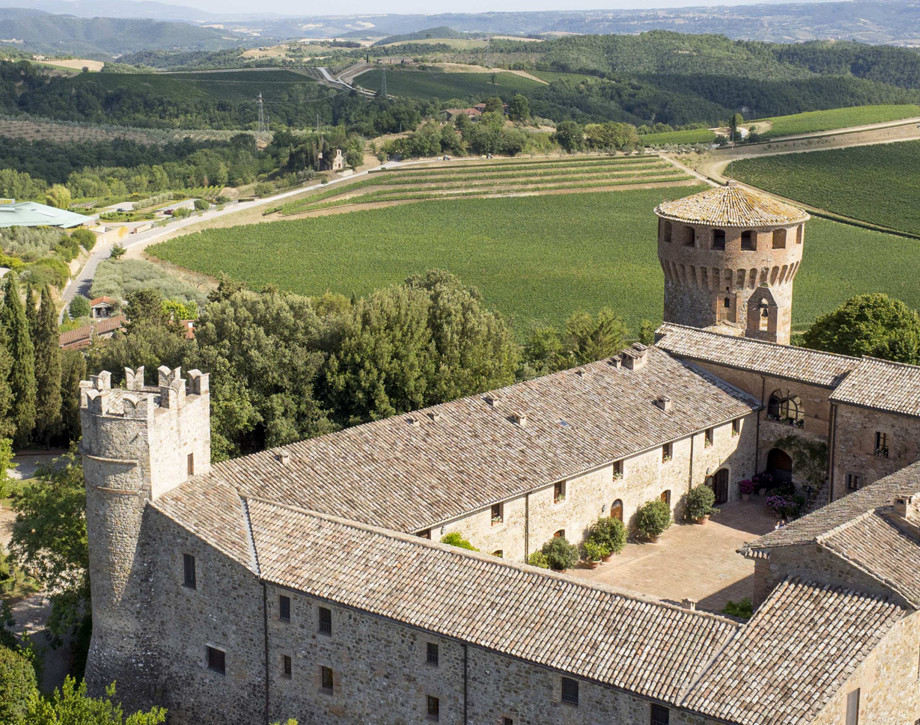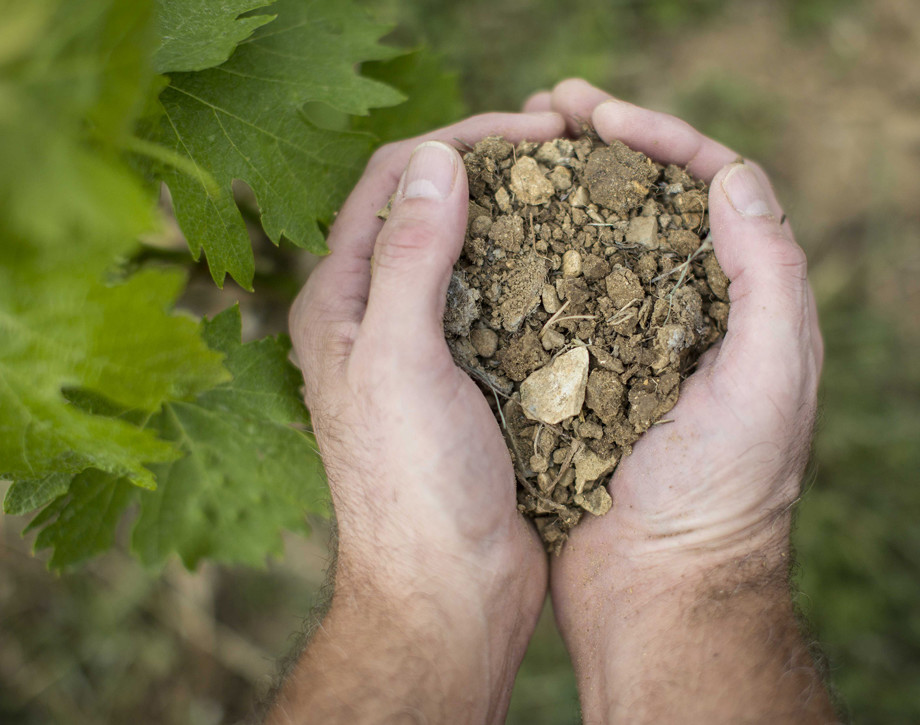Pinot Nero della Sala

The Wine
The first vintage to be produced was the 1990 vintage. The wine is made entirely with Pinot Nero grapes and is considered Cervaro’s alter ego: together they represent the two different expressions of Castello della Sala’s complex and refined spirit. Four hectares (10 acres) of Pinot Nero vineyards sit at an altitude of 400 meters (1312 feet) above sea level on calcareous soils rich in fossils with sedimentary sands from the Pliocene epoch.
Historical Data
The ten acres (four hectares) of Pinot Noir grapes at the Castello della Sala estate are situated at an altitude of over 1300 feet (400 meters) above sea level on calcareous soils rich in marine fossils which alternate with strata of sedimentary sands from the Pliocene epoch. The wine was first produced in 1990. Castello della Sala is a fortress erected in the 14th century located approximately ten miles (18 kilometers) from the city of Orvieto and was acquired by the Antinori family in 1940.

The Wine
The first vintage to be produced was the 1990 vintage. The wine is made entirely with Pinot Nero grapes and is considered Cervaro’s alter ego: together they represent the two different expressions of Castello della Sala’s complex and refined spirit. Four hectares (10 acres) of Pinot Nero vineyards sit at an altitude of 400 meters (1312 feet) above sea level on calcareous soils rich in fossils with sedimentary sands from the Pliocene epoch.

A red amidst whites
At Castello della Sala, an area historically important for white wines, Pinot Nero offers an authentic and typical expression of its variety with a strong territorial character.
Winding vineyards
The 4 hectares (10 acres) of Pinot Nero grow along the hillsides shaping the landscape into a series of sinuous terraced vineyards.
Understanding nature
The particularly hot climate of Castello della Sala has forced agronomists to invent new ways to protect the grapes from the hot summer sun. The vines’ shoots are allowed to grow in length and are then folded over the plant so its leaves can shade the Pinot Nero grape clusters.
Climate
The 2016 vintage was distinguished by a winter with frequent rainfall and by repeated and significant drops in temperatures. It was characterized as well by a spring which was not particularly mild. Frequent but not particularly abundant rains between late April and mid-June, despite the important period of lower temperatures registered during the first ten days of May, assisted in a precocious and vigorous development of vine vegetation. The brief early anticipation of the various phases of the vine cycle came progressively back into balance during the month of July. A warm summer with positive temperature swings between daytime heat and evening and nighttime coolness favored the development of aromatic components in the grapes. The picking of the Pinot Noir began during the first week of September and terminated in mid-month.
Vinification
After the destemming and a soft pressing, the must went small, conical, stainless steel fermentation tanks where, after a three day period of cold maceration on its skins, it fermented for an additional week. This second phase was carried out at a temperature of 79° Fahrenheit (27° centigrade) and terminated in small French oak barrels, where the wine also completed its malolactic fermentation. The aging in oak continued for a few months, after which the wine was bottled. The wine was marketed after a period of bottle aging in the historic Castello della Sala cellars
Historical Data
The ten acres (four hectares) of Pinot Noir grapes at the Castello della Sala estate are situated at an altitude of over 1300 feet (400 meters) above sea level on calcareous soils rich in marine fossils which alternate with strata of sedimentary sands from the Pliocene epoch. The wine was first produced in 1990. Castello della Sala is a fortress erected in the 14th century located approximately ten miles (18 kilometers) from the city of Orvieto and was acquired by the Antinori family in 1940.
Tasting Notes
The 2016 Pinot Noir shows a luminous ruby red color, not particularly deep but characteristic of this grape variety. The nose expresses delicate notes of berry fruit, pomegranates, red currents, and cherries along with spicy sensations. The palate is soft, silky, and of fine elegance and complexity. The persistence is excellent and gives much length to the finish and aftertaste.
Awards
Bibenda 5 Grappoli IT Wine Spectator 93/100 USA
Scheda

Castello della Sala
Castello della Sala is located in the Umbria region, not far from the Tuscan border, about 18 kilometers from the historic city of Orvieto. The Medieval castle’s property extends over an area of 600 hectares (1482 acres), 229 hectares (495 acres) are planted with vineyards at an altitude that varies between 220 and 470 meters above sea level (722/1541 feet) on the gently rolling hillsides that characterize the beautiful countryside in this area. Castello della Sala is the perfect place for growing white varieties. The vines grow in clay and calcareous based soils, rich in fossil shells, and they are well exposed to the rising of the sun with an excellent difference of temperature between day and night. The one exception to the rule is Pinot Noir, the only red variety that has found in this area ideal growing conditions to best express its full potential.

Soil
Calcareous soil with fossils and sedimentary sand dating back to the Pliocene period.


















